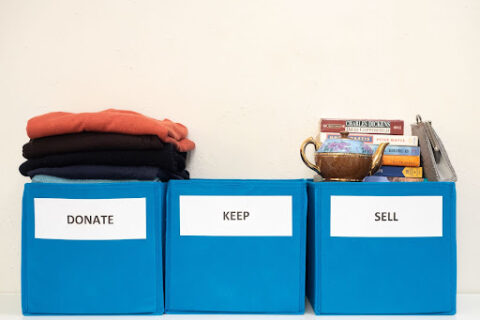Choosing the right long-distance movers might seem like a tall order, even for those with varied experience in moves of this size or distance. After all, when starting out in the moving process, it’s easy to get overwhelmed with everything it might seem you’ll have to take on yourself.
From finding the right long-distance movers to decluttering to packing up all of your items (never mind the journey itself that’s ahead of you!), knowing where to start and how best to plan the process ahead of you can easily get disorganized fast.
To keep yourself on the right track, you need to take on a long-distance move with as much planning and preparation time on your side as possible. From researching your long-distance moving company to giving yourself a comfortable amount of time to prepare yourself, your household, your family, and any pets you might have, to taking off work and giving yourself enough time to travel and settle in properly – you’ve got a lot ahead of you!
However, when you give yourself the right tools to prepare for your move, you can set yourself up for a great moving experience. Follow some of our best long-distance moving tips to keep yourself in the best shape for relocating.
How to Choose a Long-Distance Moving Company
Before we get into how to use the best moving tips to make your relocation easy, let’s first talk about one of the most important aspects of the relocation process: finding the right movers for you.
Like we said before, long-distance moving needs a lot more planning and attention to detail to make work properly – more so than a local moving process you might be used to. You need a long-distance moving company that not only has the capability to bring your home or business to your destination safely, but that has the experience to do so smoothly and efficiently while being prepared for anything. On top of all of this, you should get all of these benefits while getting the right price from your company on top of this.
- Specialties & Experience
- Licensing
- Look at Customer Reviews
- Get Multiple Quotes
- Long-Distance Moving Tips
- Anticipate Moving Costs: Before you book your movers, try to anticipate the moving costs you might be faced with. Keep in mind that movers usually charge based on three factors: distance, the weight of the items being moved, and whether or not you’ve added on any specialized services. If you’re using a service like Bekins Van Lines, you won’t have to worry about hidden costs, but if you’re not, always talk to your customer representative to make sure that you won’t be surprised later.
- Make a Budget: You should always have a budget planned out before you begin the moving process for a variety of reasons. Having a realistic budget in place will let you anticipate and prepare for the cost of your movers, the cost of your specific travels, and things having to do with moving into your new home. Having a budget will also let you build in a buffer zone in case of hiccups or unforeseen costs having to do with your move or your new home.
- Declutter: Before starting the actual packing process, go through all of the items in your home and organize them into what you’re keeping and what isn’t needed. Clear out the things you don’t want, use, or need, or things that just take up too much space or cause unneeded clutter. Decluttering your home will make your entire packing process much easier and will let you save big on your moving costs thanks to the lower amount of items you have.
- Gather Packing Materials: If you’re not using professional packing services like the ones offered by Bekin Van Lines, there are plenty of ways to avoid breaking the bank while still packing by yourself. Saving on packing materials will make your move infinitely cheaper and easier – even if you’re packing yourself! There are plenty of ways to save on packing materials. You can source things like cardboard boxes, bubble wrap, and other packing materials from friends, family, local businesses, or even online through places like Facebook Marketplace for free. To further save on packing, you can utilize existing items like blankets, sheets, old t-shirts, socks, and other items as packing materials or cushions in your boxes. This will let you save big on things like bubble wrap.
- Packing: After decluttering and gathering your packing materials, it’s time to start packing! Having the right timeline and strategy for packing will let you tackle the process efficiently and with as little stress as possible. Create a packing schedule for yourself and organize your home to map out what items should be packed earlier and which should be packed gradually and at the end of your process. Taking things room by room and packing up décor or nonessentials first is a good place to start. With a schedule and strategy in place, you can take on a little bit at a time and make things smooth and easy leading up to moving day.

